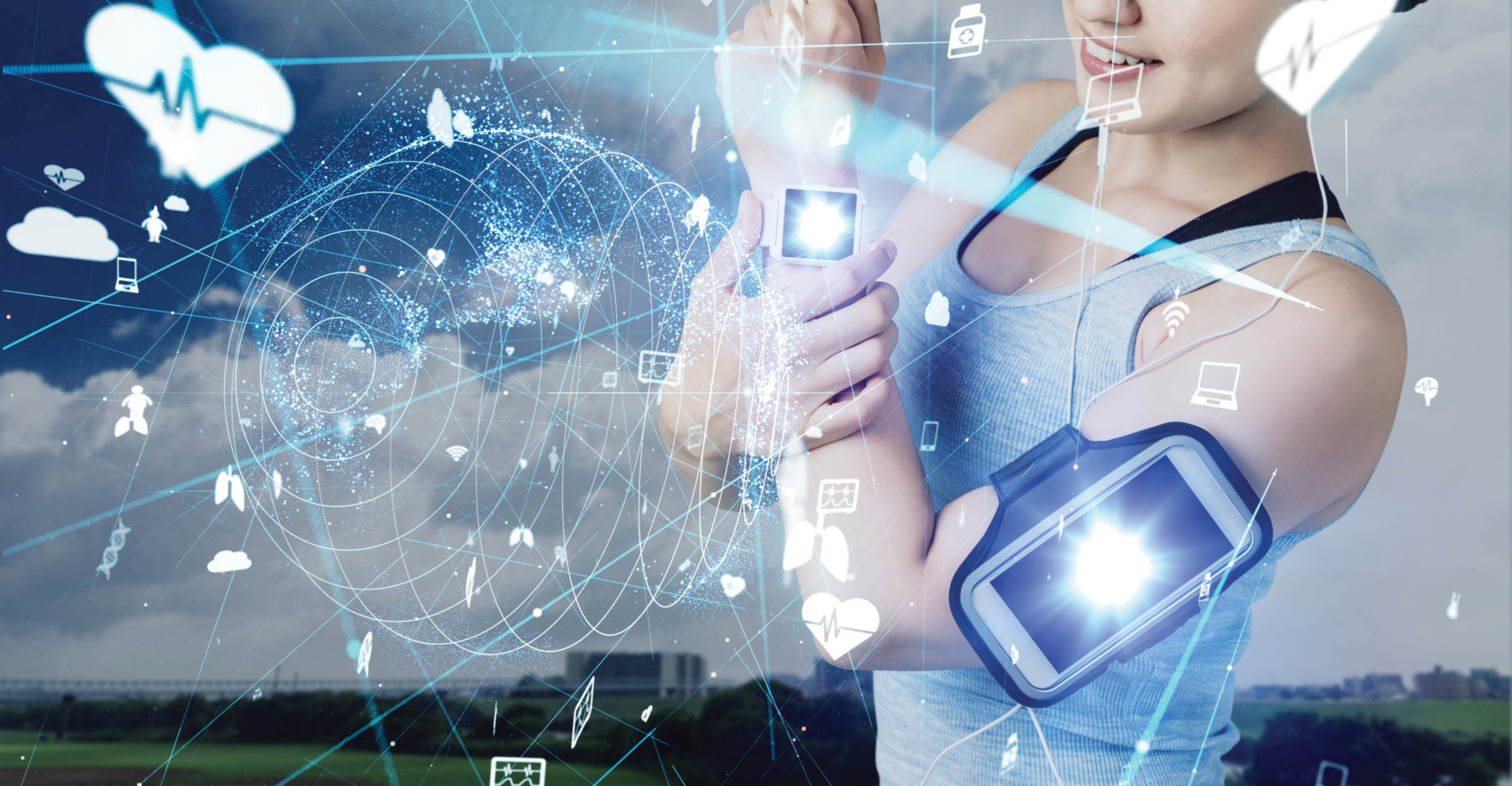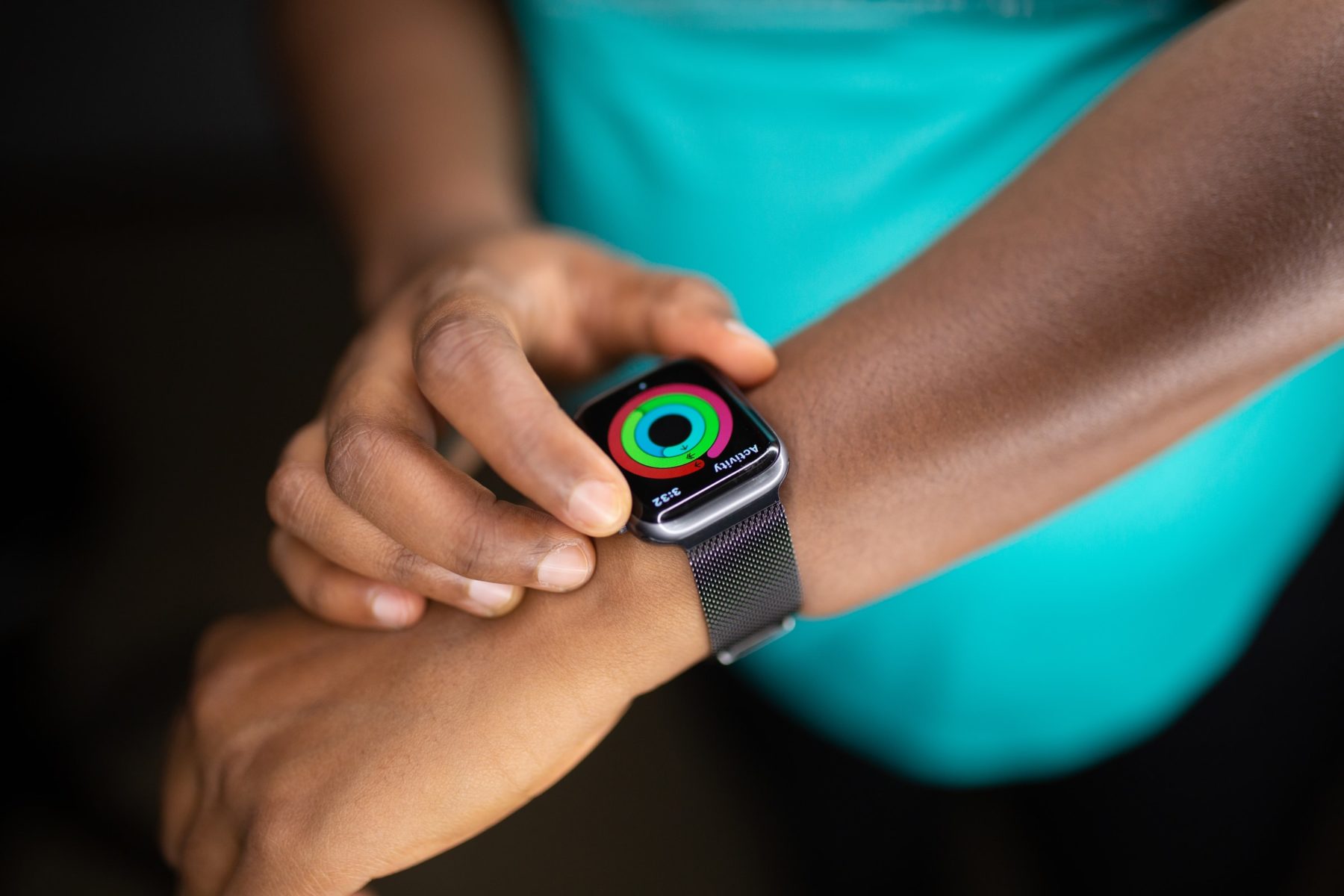The Evolution of Wearable Tech

I was recently at my parents’ house helping them clean storage bins from the garage when I found an old Jack LaLanne VHS (what’s that?) exercise video. My parents surprisingly still had a working VCR, and I watched as “The Godfather of Modern Fitness” went through a circuit of jumping jacks, tricep dips and his signature one-handed pushup.
I laughed to myself thinking these exercises seemed basic and antiquated, but he ended the workout by telling his audience, “It’s not what you do some of the time that counts — it’s what you do all of the time that counts.”
Although he was likely referring to regular exercise, proper nutrition and sleep, his words speak to a truism that the world of fitness and fitness technology is built on today. Technological advancements in wearable biofeedback devices have allowed the everyday consumer to live that truism and start tracking what we do “all of the time.”
Applications in Fitness
Wearable biofeedback devices comprise a multibillion-dollar industry and range from wrist-worn devices to those strapped onto the torso, arms and legs to “smart clothing” with electrodes woven into the clothing fabric. These devices can help optimize training by allowing the wearer to find the perfect balance between suboptimal exercise load (leading to stagnation and “plateaus” in performance) and exercise loads that overtrain (leading to muscle fatigue and injury).
For example, the Apple Watch Series 6 uses infrared and near-infrared technology as well as photoplethysmography — aka PPG, a method of measuring heart rate using a light source and a photodetector on the skin surface — to measure heart rate (HR), heart rate variability (HRV) and heart rate recovery (HRR).
Heart rate variability is the length of time between heartbeats controlled by the body’s autonomic nervous system. This system regulates our fight-or-flight and relaxation responses. So, if a person is in a fight-or-flight mode, the variation between heartbeats tends to be low while the variation between subsequent beats is high if the body is in a more relaxed state.
In other words, the higher the HRV, the more the body is able to “switch gears,” showing an increased resilience to stress. Recent research has shown that low HRV may be linked with worsening depression or anxiety and may even be associated with an increased risk of death from cardiovascular disease.
Meanwhile, heart rate recovery is the decrease in heart rate at one minute after stopping exercise. The faster the heart recovers to baseline after exercise, the healthier one’s heart is thought to be. Research has shown that the longer the HRR, the higher the risk of all-cause mortality and death associated with coronary artery disease.
Another wearable device that helps optimize training is the Athos Shorts. These compression shorts and leggings have built-in sensors which allow the wearer to track effort (how hard the muscles are working), balance, form (are you using the right muscles for the desired exercise?) and active time versus rest time (let’s face it, we all take Instagram and TikTok breaks at the gym). The sensors use electromyography (EMG) technology similar to what is used in a neurologist’s office. This technology can sense a muscle’s activity in response to an electrical signal (i.e. from a nerve).
Yet another device aimed at optimizing training is the Whoop Strap. You may have seen your favorite baseball or football players sporting one of these on the field as it is currently the only wearable wrist fitness tracker allowed by the MLB, and it is the official recovery device of the NFL.
The Whoop Strap uses its accelerometer, three-axis gyroscope and PPG to measure resting heart rate, HRV and HRR. It then compiles this data and, through a complex algorithm, generates a metric called “strain” to quantify how much cardiovascular stress your body is in during workouts. This is, in part, determined by your maximum heart rate and how much time you spend at, above and below your maximum heart rate as well as your optimal heart rate for cardiovascular activity.
The more time you spend at or near your maximum heart rate, the greater the strain. It also takes this data and, coupled with data from your respiratory rate and sleep, will calculate your “recovery” or readiness for exercise. This can be a great tool to allow your body adequate rest and minimize those times when you get to the gym but just can’t seem to give that extra effort.
Not Just for Athletes
Looking beyond athletic training optimization, wearable biofeedback devices also offer practical, everyday uses. It is standard for today’s smartwatches and odometers, for example, to offer users the ability to track steps taken or distances traveled and translate that to calories burned. This is done through GPS, local wifi signals and built-in altimeters to determine the wearer’s physical location. Most smartwatches today also have gyroscopic technology to measure arm/body movements and body positioning.
These devices are also useful for everyday mindfulness training. For example, the Apple Watch reminds the wearer to stand in order to avoid prolonged sedentary periods (a leading, global risk factor for disability and mortality). Devices like the Fitbit Sense, Samsung Galaxy Watch 3 and Apple Watch Series 6 can remind the wearer to breathe when they pick up on stress cues like rapidly increasing heart rate through their use of infrared technology.

Another area of daily use is sleep tracking. The Fitbit Charge 4 and Whoop Strap use heart rate, HRV and body movements to determine how much time you spend in wakefulness, restlessness and sleep. These can then estimate your sleep latency (how long it took you to fall asleep) and how much time you spent in the light stages, deep stages and REM sleep.
Perhaps one of the most advanced uses of fitness trackers today is the measurement of heart rhythm. The Apple Watch Series 6 has an electrocardiogram (ECG) feature measuring electrical signals across the heart and can help determine if the contractions of the upper and lower chambers of the heart are out of sync. A recent study by Stanford University showed that the ECG feature of the Apple Watch had a 71% positive predictive value (i.e. when a positive finding is deemed to be truly positive and not a false positive). In those instances, 84% of the participants who received irregular pulse notifications were found to be in atrial fibrillation at the time they received the notification — truly life-saving technology!
How Accurate Are They?
Despite the leaps and bounds that wearable biofeedback devices have made over the years, many of the devices studied in the medical literature have not been independently verified. Some companies, like Apple, partnered with academic institutions to further validate their technology. Athos contracted studies of its wearable smart clothing line which found that the Athos surface EMG (sEMG) devices yielded very similar findings to research-grade EMGs found in medical offices or academic institutions.
In addition to the need for further validation, another shortcoming of fitness trackers is the potential for user error. For example, for heart rate monitors, pulse oximeters and ECG devices dependent on infrared, near-infrared and PPG technology, motion, tightness of fit, skin pigment and high BMI can all affect the readings and yield inaccurate results. For devices that estimate sleep stages and measure sleep quality, having inconsistent data can impact the findings. For devices using GPS location and wifi dependence, remote locations or those underground will cause an interruption of accurate measurement as well.
Another factor to consider is the need to properly interpret the data. I have had several patients visit me in the office worried about their heart rate rising in response to stress. When we discuss the natural transient rise in heart rate which can occur in response to stress, physical activity, caffeine intake, nicotine and tobacco use and pain, they gain a better understanding of their own bodies and how to interpret the data from their devices. Trying to understand complex metrics like HRV, HRR and the sEMG findings from wearable devices can be a difficult task without the proper background or information.
Is it Worth It?
Ultimately, we have come a long way in advancing and incorporating technology to optimize training, push our bodies to new limits and gain new knowledge and insight about our day-to-day health. Wearable fitness trackers have allowed consumers access to personal health metrics once reserved only for research and clinical purposes or for professional athletes.
Despite this, we still have a long way to go in order to validate what these devices promise, minimize user error and misinterpretation of data, but I think the future is bright. I often wonder, 30 years from now when my children are helping me clean storage bins from my garage, what kind of technology will they have that they laugh at the smartwatch I had in 2021?
About the Author

Dr. de Lota is a Family Medicine physician working at Austin Regional Clinic. He enjoys treating people of all ages and has a passion for preventative care, evidence-based medicine and patient education.






